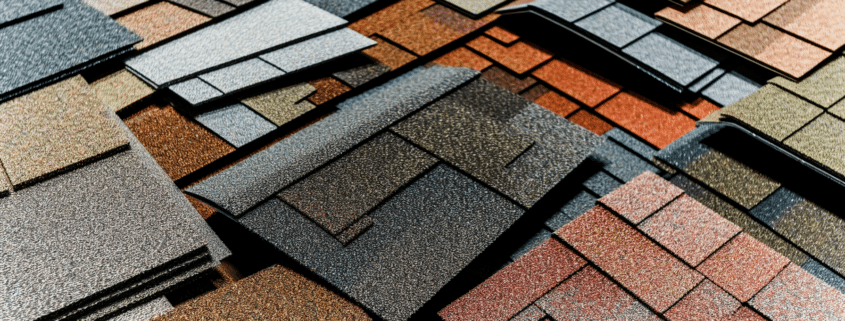Top Considerations for Your New Construction Roof: Costs, Materials, and Trends
Choosing a roof for new construction influences not just the final look of your home but also its long-term performance and cost. This article provides an in-depth look at the essential aspects of new construction roof, from common material choices to cost considerations and performance in various climates. We’ll explore practical tips and trending options to help you make an informed decision without getting bogged down in unnecessary details.
Key Takeaways
-
The choice of roofing material should be based on factors such as local climate, architectural style, and preferences, with popular options including asphalt shingles, metal roofing, and slate. Each material presents its own blend of aesthetics, energy efficiency, resistance to elements, and cost implications.
-
A new roof is composed of several critical components like underlayment, flashing, shingles, and ventilation, each contributing to the roof’s overall functionality and durability. Proper installation and regular maintenance of these components are key to preventing leaks and ensuring the roof’s longevity.
-
The costs of new construction roofing vary according to the roof size, material choice, design complexity, and regional labor rates. Additional features such as skylights, chimneys, or specific architectural details can significantly increase the total cost, while long-term savings and value may be realized with choices like solar roofing.
Exploring New Construction Roofing Options
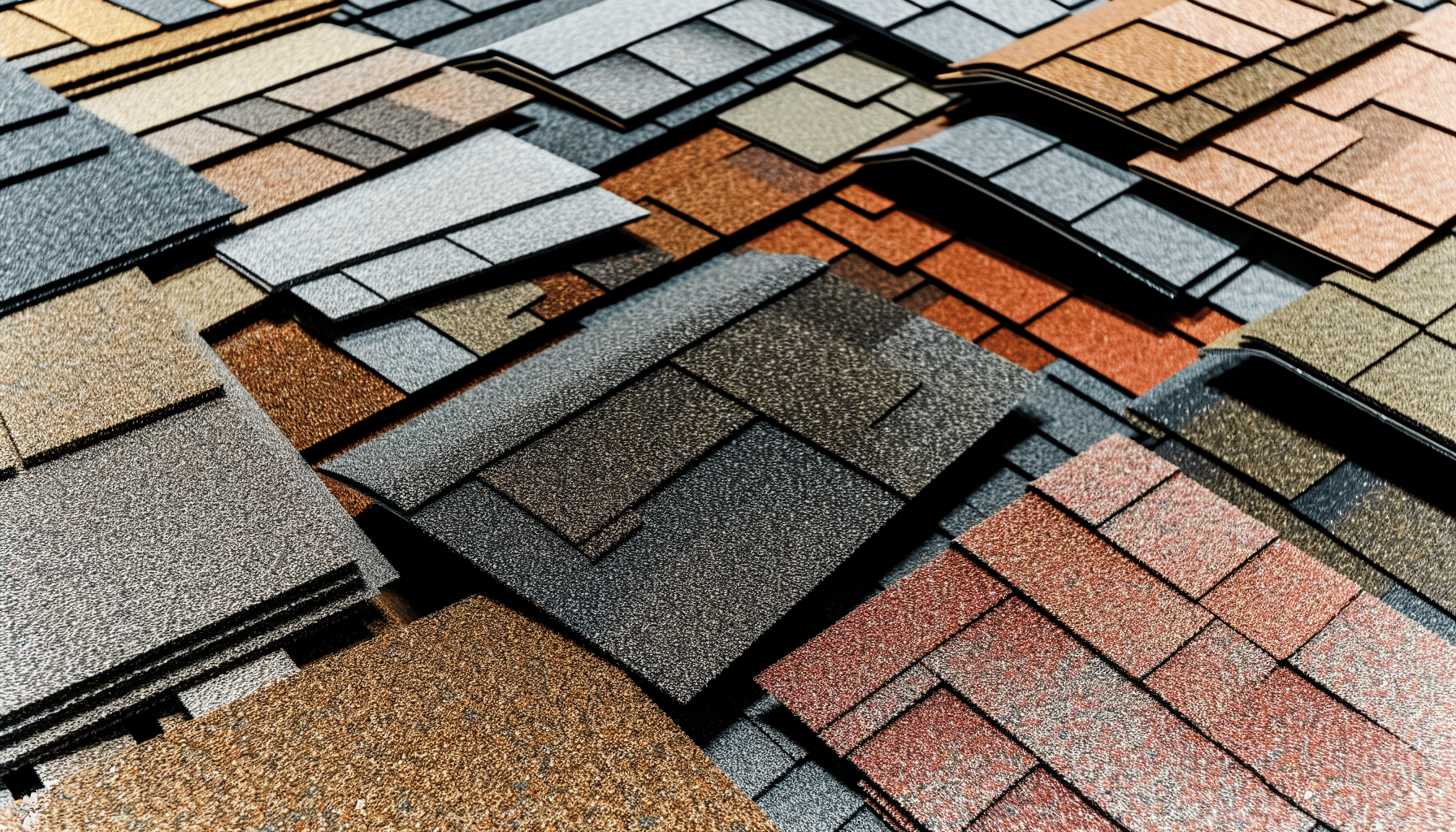
Your new construction roofing journey begins with deciding on the most suitable roofing material. With a variety of options available, including asphalt shingles, metal roofing, and slate roofing, the choice can seem daunting. Keep in mind, a reputable and experienced roofing contractor is essential to tailor the roofing system to the local climate conditions and architectural requirements.
Asphalt Shingle Roofs: A Popular Choice
Asphalt shingles are a favorite choice for many homeowners due to their affordability, versatility, and energy efficiency. This cost-effective roofing material also provides a wide range of color and style options that mimic slate or cedar shakes, making it compatible with various roof shapes and angles. The installation process of an asphalt shingle roof is straightforward, contributing to lower costs and ease of finding qualified roofing professionals.
In addition to their aesthetic appeal, asphalt shingles contribute to energy-efficient roofing systems and integrate easily with features like chimneys or skylights.
Metal Roofing: Longevity and Style
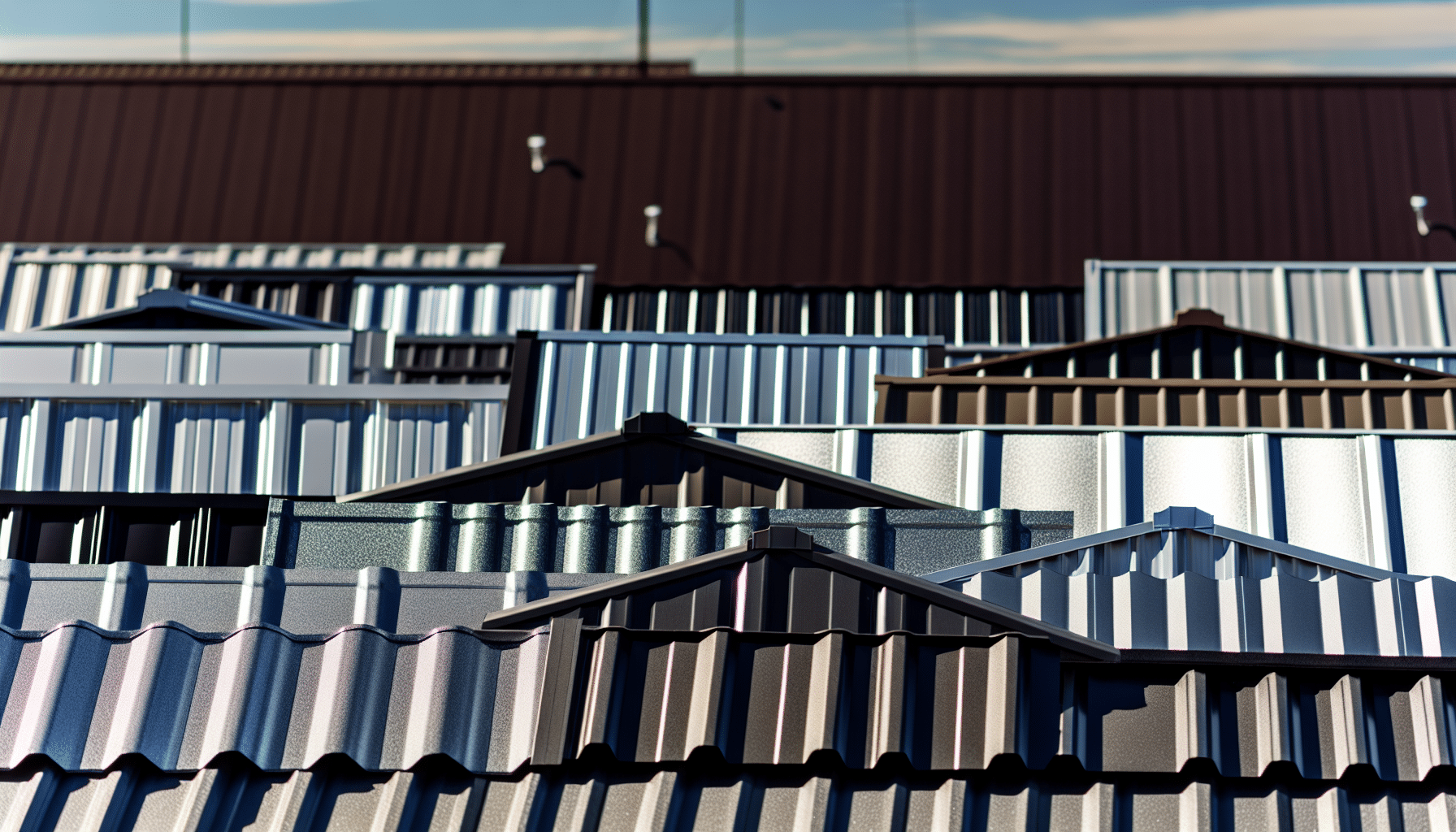
Metal roofing is another excellent alternative, boasting exceptional durability and a wide range of styles. This roofing material is capable of resisting hurricane-force winds up to 160 mph and has a high hail impact resistance rating. The diverse styles of metal roofing cater to a variety of architectural designs and regional preferences, including options like exposed fastener systems and standing seam models for easy installation.
In addition to its durability, metal roofing provides eco-friendly benefits due to its reflective properties that enhance energy efficiency and its long lifespan that minimizes the frequency of replacements.
Slate Roofing: Elegance and Durability
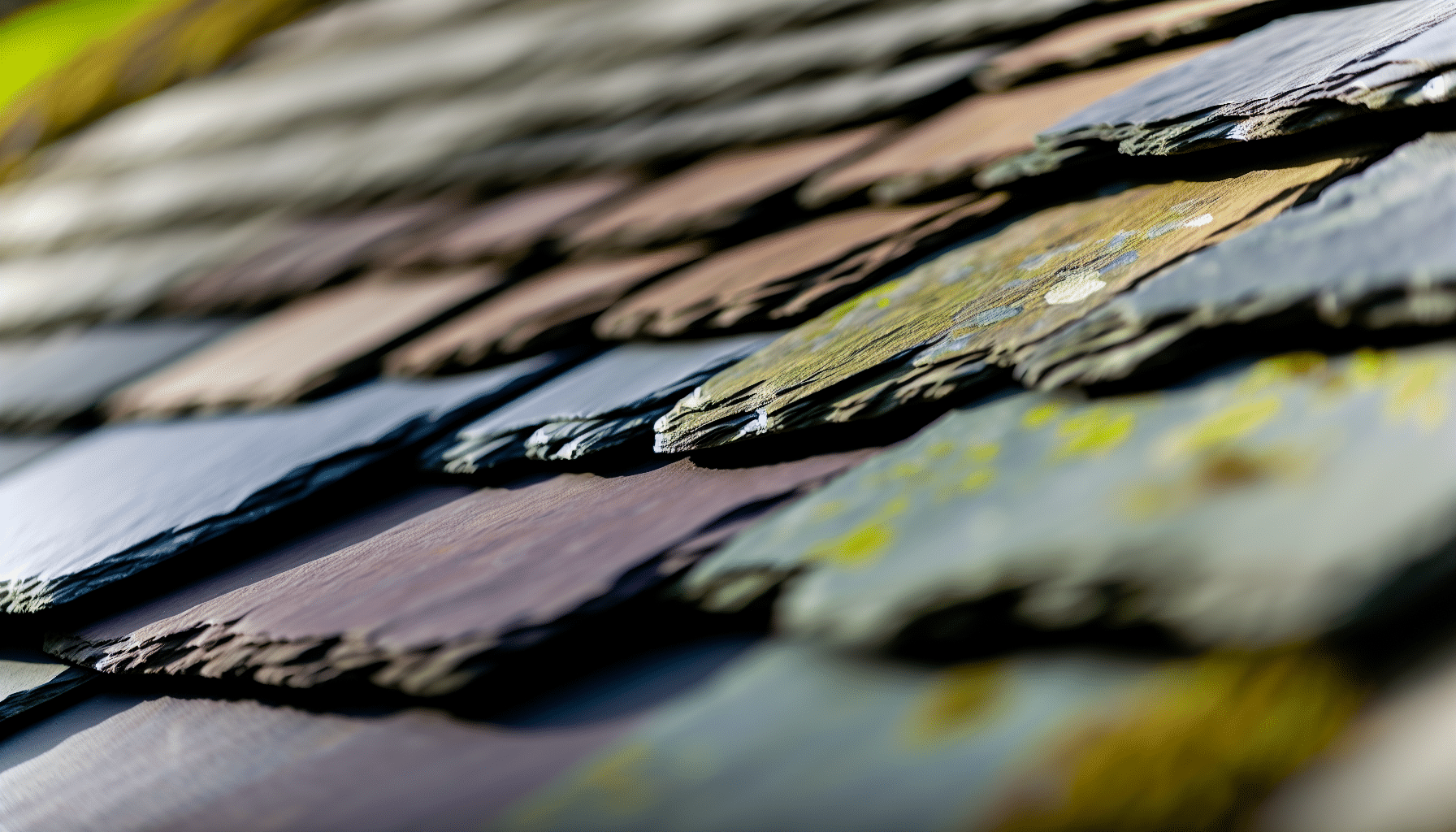
Slate roofing is a timeless choice that combines elegance and durability. This natural material offers a range of colors and patterns, allowing for a high level of aesthetic customization and a classic appearance that carries historical value. In addition to its aesthetic allure, slate roofing offers high functionality. Thanks to its mineral stone composition, it is anti-corrosive, resistant to rust, and offers an extremely long lifespan, which translates to less frequent replacements and potential long-term cost savings.
However, it’s worth noting that this material can be expensive, heavy, and difficult to repair, with significant repair costs associated with large hailstones or loose tiles. On the upside, slate tiles are an environmentally friendly choice, with proven durability, fire resistance, and the potential to be energy efficient when treated with special coatings.
The Anatomy of a New Roof: Components and Installation
To ensure the success of your new construction roofing project, it’s important to understand the anatomy of a new roof. A well-constructed roof comprises multiple components, each playing a vital role in the roof’s durability and functionality. Some of the key components include:
-
Underlayment: Provides a secondary layer of defense against weather conditions
-
Flashing: Precisely placed around roof features to prevent water penetration
-
Shingles: The outermost layer of the roof, providing protection from the elements
-
Ventilation: Allows for proper airflow and prevents moisture buildup
-
Gutters: Collect and redirect rainwater away from the roof and foundation
Experienced contractors play a vital role in ensuring compliance with regulations and obtaining necessary permits for the projects.
Underlayment and Water Shielding
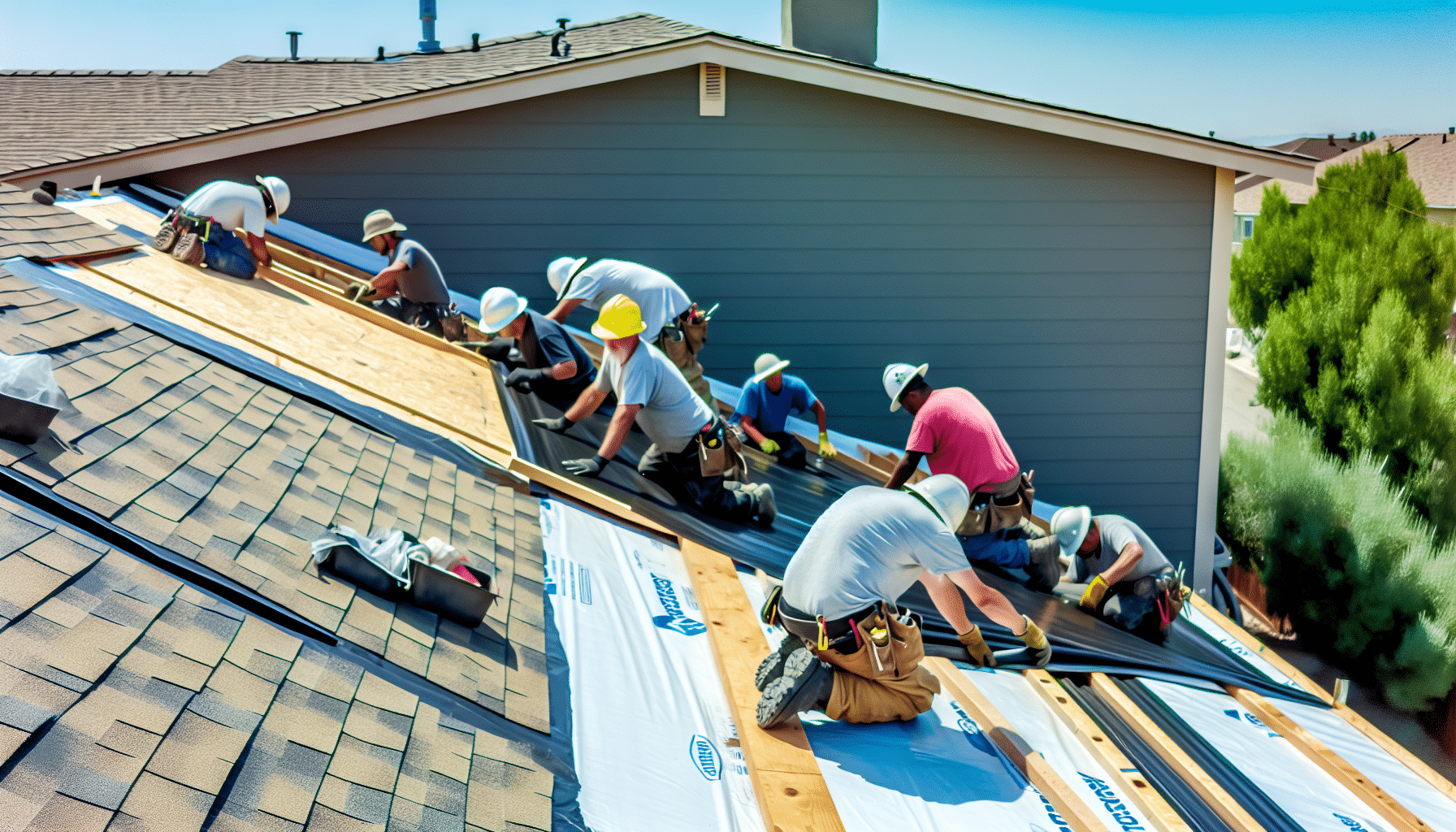
The underlayment is an essential component of the roofing system. This protective barrier is designed to prevent leaks, mold, and water damage, sitting between the roof’s framing materials and the top layer of shingles.
The market offers three primary types of underlayment materials:
-
Asphalt-saturated felt: cost-effective and water-resistant, making it ideal for sloped roofs.
-
Rubberized asphalt: provides excellent waterproofing and durability.
-
Non-bitumen synthetics: lightweight and resistant to mold and mildew.
Each type has its strengths and weaknesses, so it’s important to choose the right underlayment material for your specific roofing needs.
On the other hand, there are different types of underlay that offer various benefits:
-
Felt underlay is the most common and affordable option. It provides basic protection against moisture and helps to even out the roof surface.
-
Rubberized asphalt underlay offers waterproofing and durability, along with flexibility for extreme temperatures and unusual roof shapes.
-
Non-bitumen synthetic underlay, made from plastics like polyethylene or polypropylene, provides superior water resistance, mold resistance, and strength, often at a higher cost than traditional materials.
Flashing and Sealing: Critical for Leak Prevention
Flashing is another key component of a well-constructed roof. This feature is essential for directing water away from critical areas of the roof and is typically made from materials like galvanized steel. There are different types of flashing that are used for various parts of the roof such as step flashing for roof-to-wall areas, continuous flashing for a watertight apron effect, and counter-flashing for chimneys.
Effective installation of flashing involves precise placement around roof features like chimneys and vents, with the unified goal of guiding water away from the building structure. Regular maintenance, such as the replacement of caulking around flashings, is also vital to ensure lasting protection against water leaks.
Navigating Roof Replacement Costs for New Construction
Various factors can influence the cost of a new construction roof. Roof replacement costs are determined by:
-
The roof’s size
-
The chosen materials and their prices
-
Design complexities including steepness and pitch
-
Regional labor rates
By understanding these factors, you can anticipate the costs of your new roof more accurately and make a well-informed decision.
Understanding Labor and Material Expenses
Labor and material costs significantly contribute to the overall roof cost of a new roof. On average, labor costs in roofing range from $2 to $7 per square foot, contributing to around 50% to 60% of the total roof replacement costs, with materials making up the other 40% to 50%.
Professional roofers typically charge by the ‘square,’ which is a 100-square-foot section of roof, with prices ranging from $263 to $1,769 per square. The choice of roofing materials can also affect labor costs, with some materials being quicker and easier to install than others.
Extra Features and Their Impact on Pricing
The addition of special features such as:
-
Skylights
-
Chimneys
-
Dormer windows
-
Soffits
can elevate the project’s cost. These features necessitate extra labor and customized materials, which can significantly impact the total cost of your new construction roof.
Specific architectural features that can increase the complexity and cost of roofing include:
-
Valleys
-
Hips
-
Ridges
-
The need for precise flashings
These features require meticulous measurements and specialized materials, which can drive up the overall cost of the roofing project.
Despite the higher upfront costs, incorporating features like solar roofing can provide substantial long-term value in terms of efficiency, savings, and aesthetic appeal.
Storm-Proofing Your New Roof: Weather Considerations
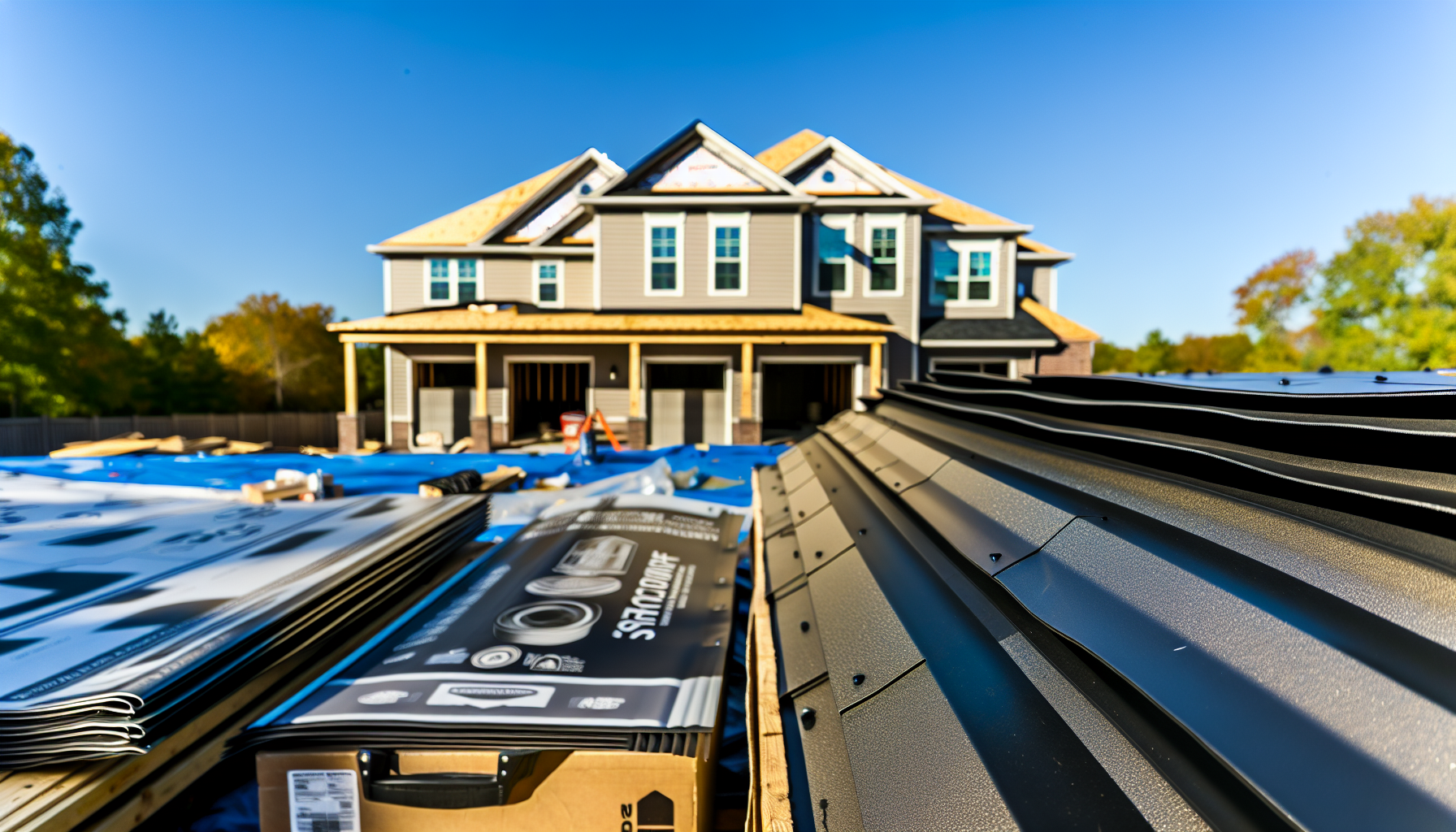
Consideration of local climate and weather conditions is vital when planning a new construction roofing project. The roof is your home’s first line of defense against harsh weather conditions, and it’s essential to choose materials that can withstand these challenges.
From high winds to hail, selecting storm-resistant materials can significantly enhance your new roof’s longevity and durability.
Enhancing Home Exteriors: Siding Installation and More
Besides the roof installation, other exterior improvements can greatly improve the overall aesthetic and functionality of your home. Rapid Roofing extends its services beyond roofing to include additional exterior improvements such as skylight, gutter installation, and James Hardie siding.
Installing high-quality siding not only serves as a protective layer for homes but also significantly enhances curb appeal, while additional installations like gutters can save homeowners the yearly hassle of cleaning.
Showcasing Expertise Through Case Studies
Rapid Roofing’s expertise and adaptability are best showcased through our successful projects and the challenges we’ve overcome. We have demonstrated remarkable ability to:
-
Handle complex roof designs
-
Manage large-scale roofing projects
-
Navigate multiple roof levels while addressing significant safety and administrative challenges.
One-Day Roof Replacement: Efficiency in Action
One of Rapid Roofing’s standout services is our one-day roof replacement. We offer comprehensive services with free estimates and full warranties as a certified GAF MasterElite contractor. During the roofing process, if additional damages are discovered, we provide thorough options and reassurance, ensuring customer confidence in the roof’s resulting condition.
Overcoming Challenges: Virtual Inspections During COVID-19
The COVID-19 pandemic posed unprecedented challenges for many industries, including roofing. However, Rapid Roofing adapted to these challenges by offering virtual inspections and consultations. By incorporating advanced technology into our inspection process, we demonstrated adaptability and a commitment to meeting clients’ needs during challenging times.
Maintaining Your New Roof: Tips and Best Practices
After the installation of your new construction roof, regular maintenance is essential to guarantee its longevity. Regular roof inspections should be conducted at least twice a year, in the fall and spring, to facilitate early detection of issues. Identifying minor damage through inspections before it escalates can prevent serious problems like leaks that could cause interior damage. Many warranties and insurance policies mandate professional roof inspections, underscoring their critical role in roof maintenance.
Seasonal shingle inspections are critical for preserving roof longevity by checking for wear, damage, or missing pieces. Additionally, annual treatments for moss, lichen, and algae help in maintaining not only the roof’s condition but also its aesthetic.
Choosing the Right Roofing Contractor
Selecting the appropriate local roofing contractors is a vital step in your new construction roofing journey. Selecting a licensed and insured contractor is crucial for ensuring compliance with local codes and protection against liability. At Rapid Roofing, we are fully licensed and insured, providing top-notch construction roofing services for your new construction roofing needs.
Our reputation for professionalism, respectfulness, fairness in pricing, and providing detailed information about work and materials enhances our reputation for high customer satisfaction.
Roofing Innovations and Sustainable Practices
With innovative practices and materials, the world of roofing is continuously evolving, revolutionizing roof design and installation. From self-healing shingles that fix minor damage automatically to advanced solar shingles that offer energy generation and aesthetic appeal, roofing innovations are transforming the industry and improving existing roof systems.
At Rapid Roofing, we are committed to these sustainable solutions, using efficient and eco-friendly materials in our projects. Furthermore, we always aim to reduce environmental impact, as seen in our use of recycled insulation.
Summary
Choosing a new construction roof involves making important decisions regarding the right material, considering costs, and selecting an experienced roofing contractor. As you embark on this journey, remember that your roof is not just a protective shield against the weather but also a significant factor in your home’s overall aesthetic appeal. Whether you opt for asphalt shingles, metal roofing, or slate roofing, make sure to consider the local climate conditions, the overall cost, and the contractor’s expertise.
Frequently Asked Questions
How much does it cost to replace 1000 sq ft of roof?
It typically costs around $8,000 to replace 1000 sq ft of roof, based on the average roofing cost per square foot.
What is the latest type of roof?
The latest types of roofs include modern materials and designs such as green roofs, solar tiles, and cool roofs. Consider these options for your roofing project.
How much does a new roof cost in Texas?
A new roof in Michigan and Ohio can cost between $5,000 and $20,000, depending on factors like the size of the roof, the type of material used, and labor costs. Generally, the average cost ranges from $6,000 to $12,000 for a 2,000 sq. ft. shingle roof.
How long does it take to build a roof on a new house?
It typically takes 1-3 days to install traditional asphalt shingles on a new roof, but the duration can vary based on the type of roofing material and the size of the roof. Keep in mind that larger roofs may require more time for installation.
What factors influence the cost of roof replacement?
The cost of roof replacement is influenced by factors like the size of the roof, chosen materials, design complexities, and regional labor rates. These factors play a significant role in determining the overall cost of the project.

